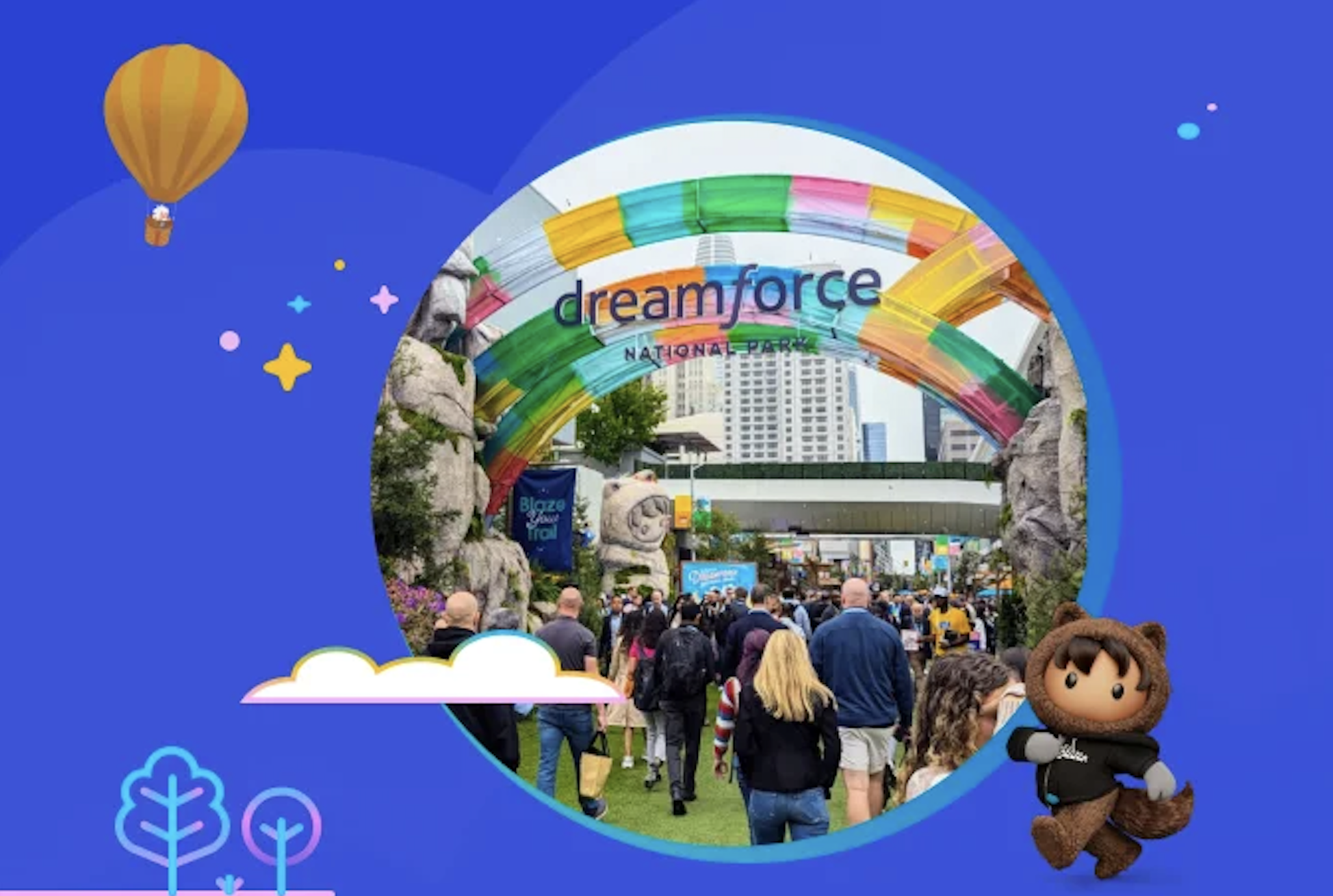Five Key Takeaways from Dreamforce 2025: Will AI Finally Learn to Read the Room?

Five Key Takeaways from Dreamforce 2025: Will AI Finally Learn to Read the Room?
Each autumn, for three days, San Francisco becomes Salesforce’s stage. The Moscone Center turns into a neon-lit carnival of branded fleece vests, swinging lanyards, tech demos, and AI showcases. There may have been some rain this year, but it didn’t dampen the spirits of the 50,000 people who descended on the Bay Area to see new ground being broken in tech. It’s one of the few places where a humanoid robot playing chess can draw a bigger crowd than a keynote speaker. By midweek, the skies cleared and Howard Street buzzed again, drones hovering overhead as crowds gathered to hear from CEO Marc Benioff and his many special guests.
Walking through the familiar halls this year, something felt different. In the past, AI was framed as a productivity tool, focused on speed and scale. This year’s theme was more human: how AI fits into our businesses and daily lives. Behind every announcement, from Agentforce 360 to Slack’s new AI workspace, ran the same idea—context. The conversation is shifting from “AI as an assistant” to AI as a collaborator, capable of recognizing tone, hesitation, and intent as meaningful signals. Dreamforce 2025 offered a glimpse of what emotionally aware, context-driven AI could look like once it moves from demos to real use.
Agentforce 360 Becomes the AI Command Center
Salesforce made clear that Agentforce 360 will sit at the heart of how businesses coordinate AI, connecting customer interactions with internal workflows. It signals a shift toward more capable agents that don’t just follow prompts but participate in how work gets done. As agents gain autonomy, awareness becomes the next challenge. How does an AI know when to pause, clarify, or recognize silence as confusion instead of disinterest? Agentforce 360 may connect the systems, but what happens in those moments of human exchange will decide whether AI becomes a true partner or remains a process.
Slack Becomes a Co-Pilot
Everywhere you looked, Salesforce positioned Slack as the new meeting ground for people and AI. Not in dashboards or data centers, but in everyday conversations. With generative AI now woven into message threads and channels, Slack is evolving into a kind of collaborative nervous system. That’s where things get interesting. The cues that shape teamwork—how people phrase questions, the tone they use in feedback, the hesitation before hitting “send”—are becoming new data points. When AI starts learning from those subtle signals, it can anticipate needs and adapt to human intent. The future workplace will run on conversations, not commands, and the quality of those conversations will depend on how well AI learns to listen.
The More Models, the Better
Salesforce’s embrace of multiple AI partners, including OpenAI and Anthropic, marked a clear turn toward flexibility. Rather than backing one system, Salesforce is choosing the right model for the right moment. That’s a practical move, since an AI’s usefulness depends on more than accuracy, it depends on context. Who it’s helping, what the goal is, and how the user feels all matter. A model trained for summarizing emails shouldn’t guide someone through a difficult client call. As companies layer more AI tools, success will hinge on giving them a shared understanding of the human side of each task.
Governance Gets a Framework
Salesforce’s new MuleSoft Agent Fabric might not sound flashy, but it could reshape how organizations manage AI. It’s a governance layer designed to connect and oversee the growing web of autonomous agents. For us, this is important because it establishes a shared context. Without it, every agent has to relearn the same rules of safety, tone, and trust. Agent Fabric creates a common backbone so that when AI acts on behalf of a company, it reflects a consistent understanding of people and intent. In a year defined by rapid agent deployment, Dreamforce reminded us that connection and coherence will matter just as much as capability.
Process Mining Gets Human
Salesforce’s acquisition of Apromore shows a move toward teaching AI how work actually flows. By tying process mining to automation, Salesforce is giving its agents a map of real human behavior where tasks slow down, where decisions happen, and where human judgment still plays a role. That’s an important step toward systems that feel less robotic. When agents understand not only what people do, but why they do it—when they recognize pressure, reflection, or intuition automation becomes more thoughtful. The focus is shifting from execution to interpretation, from speed to awareness. AI that can follow the rhythm of real work will be the kind people trust to join it.
Dreamforce 2025 felt like a milestone in how we talk about enterprise AI. Not because of the robots or the spectacle, but because the conversation itself has matured. The focus is moving from automation to collaboration. People, data, and machines are beginning to share the same space. Intelligence on its own isn’t enough anymore; context is what makes technology relatable, useful, and ultimately human. When AI can read our tone and intentions as easily as it reads data, it becomes something more than a tool, it becomes a collaborator.
%203.png)
